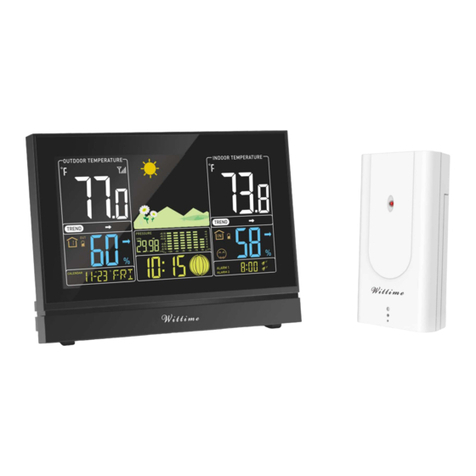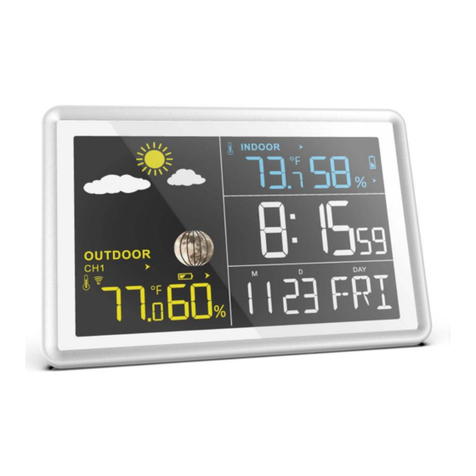
Safety
Read the following advice carefully and store these operating instructions in case you want to reread
something later. If you give the item to someone else, give them these operating instructions as well.
• This device may be used by children over 8 years of age and over, as well as by persons with reduced
physical, sensory or mental abilities, or lack of experience and / or knowledge if they are supervised or
instructed regarding the safe use of the equipment and have understood the resulting hazards.
• Keep the device and switching adapter away from children under the age of 8.
• Cleaning and user maintenance may not be carried out by children unless they are supervised.
• Children must be supervised to make sure that they do not play with the device.
• The wireless weather station and switching adapter must not be immersed in water or other liquids.
Electric shock hazard! Do not use the base unit of the wireless weather station in areas where it may be wet,
such as a sink.
• Only use the switching adapter included in the delivery. The adapter must only be used in dry, indoor
spaces and protected from moisture.
• The power cable cannot be replaced. If the cable or switching adapter is damaged, they must be disposed
of and replaced by a switching adapter of the same type.
Intended use
The weather station – consisting of base unit and wireless sensor – displays various weather information
(air pressure, humidity, temperature, etc.) from its immediate surroundings. The weather station provides a
weather forecast based on the weather information.
The weather station also displays the date, time and phases of the moon and also has an alarm function.
It also displays other information such as the dew point.
The weather station is not suitable for commercial use in forecasting weather or measuring weather
information.
Danger from electricity (when using the switching adapter)
• Connect the device to a properly installed power socket with a voltage that corresponds to the Technical
Data.
• Ensure that the socket is easily accessible, so that you can quickly remove the switching adapter if
necessary.
• Do not use the wireless weather station if the switching adapter or power cable is damaged.
• Do not cover the switching adapter with curtains, newspapers, etc. and ensure that it is sufficiently
ventilated. The switching adapter can become hot.
• Uncoil the power cable fully before connecting. Be careful not to damage the cable with sharp edges or
hot objects.
• Remove the switching adapter from the socket:
- before cleaning the wireless weather station,
- when a fault occurs during operation,
- during thunderstorms.
- Always pull the switching adapter, not the cable.






























